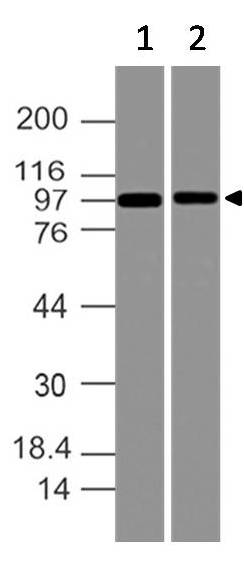Recombinant Human BMP-10(Discontinued)
Shipping Info:
For estimated delivery dates, please contact us at [email protected]
| Amount : | 10 µg |
| Purification : | Purity:>= 95% by SDS-PAGE gel and HPLC analyses. |
| Content : | This recombinant protein is supplied in lyophilized form. |
| AA sequence : | NAKGNYCKRT PLYIDFKEIG WDSWIIAPPG YEAYECRGVC NYPLAEHLTP TKHAIIQALV HLKNSQKASK ACCVPTKLEP ISILYLDKGV VTYKFKYEGM AVSECGCR |
| Alternative Name : | Bone Morphogenetic Protein-10 |
Source:HEK293 cells
Bone morphogenetic proteins (BMPs) constitute a subfamily within the TGF-Beta superfamily of structurally related signaling proteins. Members of this superfamily are widely distributed throughout the body and are involved in diverse physiological processes during both pre- and postnatal life. BMP-10 plays a crucial role in the development of the embryonic heart by acting to stimulate and maintain cardiomyocyte proliferation. It can signal through various receptor complexes usually containing BMPR-1A, BMPR-1B, ALK1, ALK3, or ALK6. The interaction of BMP-10 with its specific receptors can induce signaling initiated by the phosphorylation of SMAD transcription factors, including SMAD1, SMAD5, or SMAD8, but can also induce SMAD independent processes. BMP-10 is structurally related to BMP-9, and both can inhibit endothelial cell proliferation and migration. Recombinant Human BMP-10 is a 24.4 kDa homodimeric disulfide-linked protein consisting of two 108 amino acid subunits, which correspond to amino acid residues 317 to 424 of the full-length BMP-10 precursor.
Bone morphogenetic proteins (BMPs) constitute a subfamily within the TGF-Beta superfamily of structurally related signaling proteins. Members of this superfamily are widely distributed throughout the body and are involved in diverse physiological processes during both pre- and postnatal life. BMP-10 plays a crucial role in the development of the embryonic heart by acting to stimulate and maintain cardiomyocyte proliferation. It can signal through various receptor complexes usually containing BMPR-1A, BMPR-1B, ALK1, ALK3, or ALK6. The interaction of BMP-10 with its specific receptors can induce signaling initiated by the phosphorylation of SMAD transcription factors, including SMAD1, SMAD5, or SMAD8, but can also induce SMAD independent processes. BMP-10 is structurally related to BMP-9, and both can inhibit endothelial cell proliferation and migration. Recombinant Human BMP-10 is a 24.4 kDa homodimeric disulfide-linked protein consisting of two 108 amino acid subunits, which correspond to amino acid residues 317 to 424 of the full-length BMP-10 precursor.
Determined by its ability to induce alkaline phosphatase production by ATDC-5 cells.  The expected ED50 for this effect is 4.0-6.0 ng/ml.
For Research Use Only. Not for use in diagnostic/therapeutics procedures.
|
There are currently no product reviews
|



















.png)








